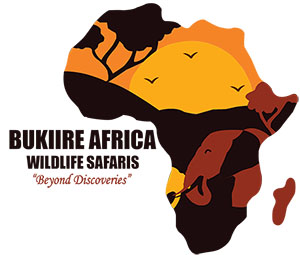Gorilla trekking is a once-in-a-lifetime experience that any one should plan to do as long as they are still alive! The activity allows travelers to encounter endangered Mountain Gorillas in their natural habitat.
Mountain Gorillas are the most famous Gorillas among the four subspecies, namely; Western Lowland Gorillas, Eastern Lowland Gorillas and Cross river Gorillas.
Mountain Gorillas inhabit in mountainous areas covered in tropical rain forests and Bamboo zones. The ecosystem is characterized of low temperatures, high altitude, rugged terrain and ever green vegetation sometimes covered in mist ! They only exist in Uganda, Congo and Rwanda. 
Mountain Gorillas are related to the human race with 98% DNA! Viewing Mountain Gorillas in their natural habitat is like visiting our distant ancestral cousins. They are an endangered species with less than 1200 individuals left on Earth for which 52% live in Uganda. Bwindi Impenetrable National Park and Mgahinga National Park. They are intelligent creatures with feelings that they can laugh and sometimes be sad.
Where, When and How to Track Mountain Gorillas
Where to Track Mountain Gorillas-Uganda-and-Rwanda -Mountain Gorillas can be tracked in Bwindi Impenetrable National Park and Mgahinga National Park of Uganda, Virunga National Park in Democratic Republic of Congo and Volcano National Park in Rwanda.
When To Track Mountain Gorillas-Gorillas can be tracked all through out the year but the best time being the dry season when there is less rainfall. Months of dry season are January, February, June, July, August and September.
How to buy Gorilla Permits-Uganda Wildlife Authority the custodians of all protected areas in Uganda, are in charge of selling Permits. To acquire a Gorilla permit, a tourist books or orders through a licensed local Tour Company. It is important to note that permits are on a high demand and therefore advised to buy permits in advance, months before the client's arrival.
Preparation before Gorilla Trek-Before embarking on a gorilla trek, travelers typically receive a briefing from park officials about the rules and regulations, as well as the dos and don'ts during the trek. This briefing ensures the safety of both visitors and the gorillas.
Hiking: Gorilla trekking involves hiking through the dense forests of Africa, often in mountainous terrain. The duration and difficulty of the hike can vary depending on the location of the gorilla family being tracked, as well as the terrain and weather conditions.
Encounter: Once the gorilla group is located, travelers are allowed a strictly controlled amount of time (usually one hour) to observe and photograph the gorillas from a safe distance. This close encounter offers a rare opportunity to witness these magnificent creatures up close as they go about their daily lives, including feeding, playing, and caring for their young.
Guides and Trackers: Gorilla treks are led by experienced guides and trackers who are familiar with the behavior and movements of the gorilla families in the area. Their expertise is invaluable in ensuring a safe and rewarding experience for visitors.
Conservation: Gorilla trekking not only provides an unforgettable experience for travelers but also plays a crucial role in gorilla conservation efforts. The revenue generated from gorilla permits helps fund conservation projects aimed at protecting these endangered animals and their habitats. Sustainability: Sustainable gorilla tourism practices are essential to minimize the impact on gorilla populations and their habitats. This includes limiting the number of visitors per gorilla group each day, maintaining strict hygiene protocols to prevent the transmission of diseases, and promoting responsible behavior among visitors.
Overall, gorilla trekking offers a unique opportunity to connect with nature and contribute to the conservation of one of the world's most iconic and endangered species. It's an experience that leaves a lasting impression and fosters a deeper appreciation for the natural world.

